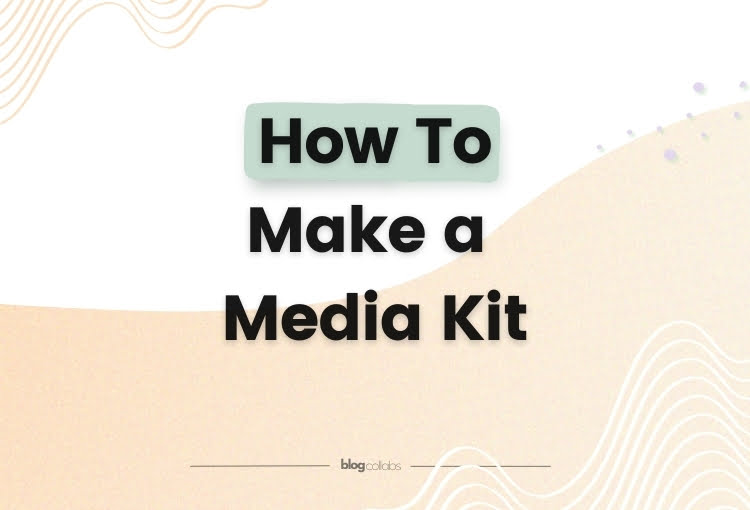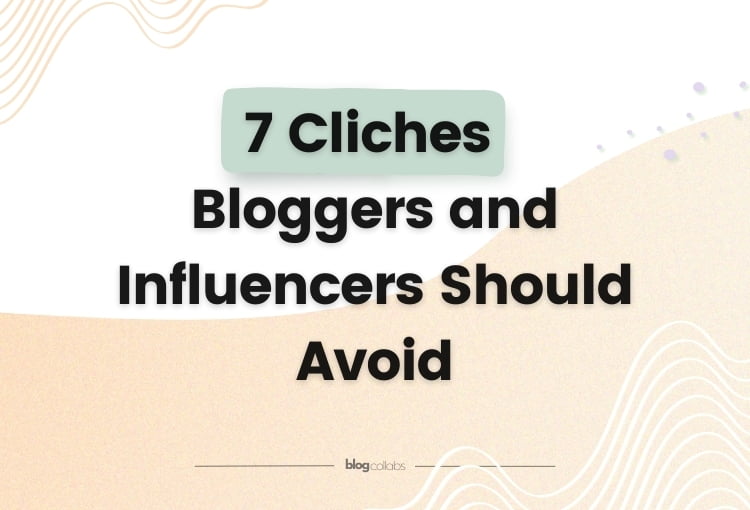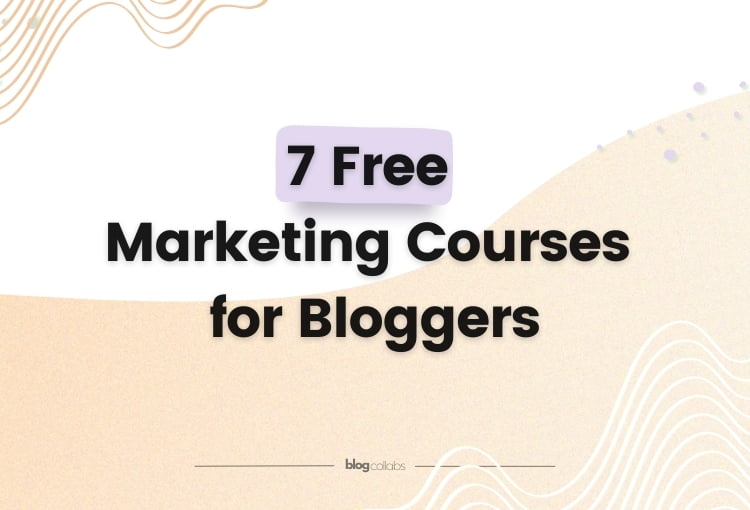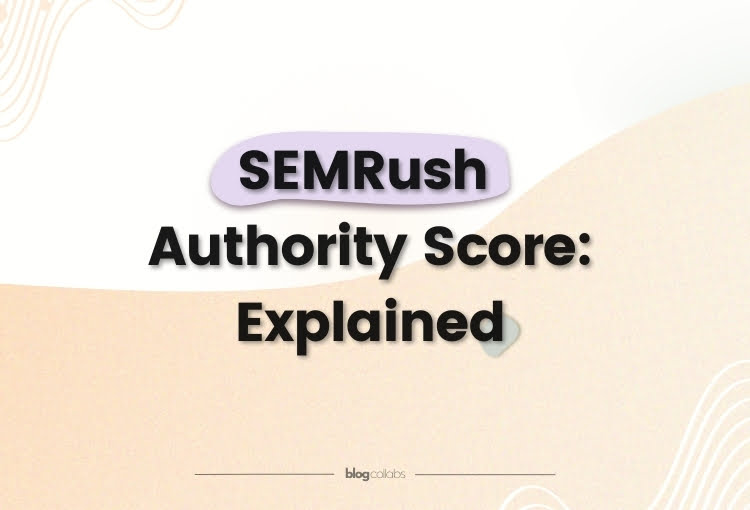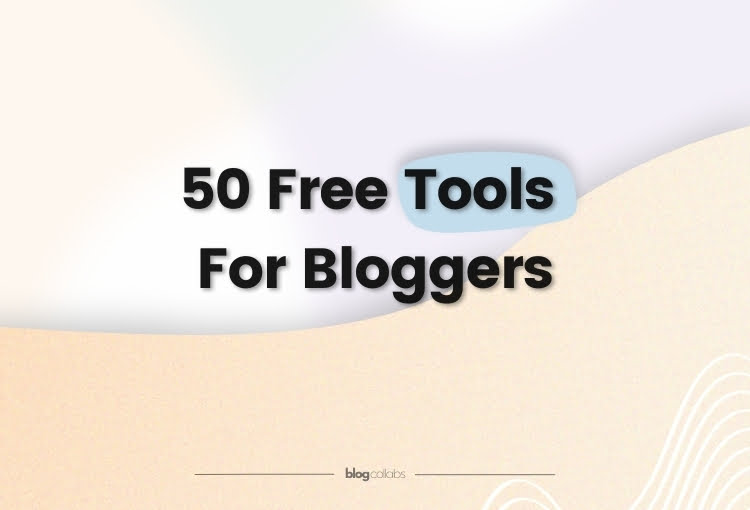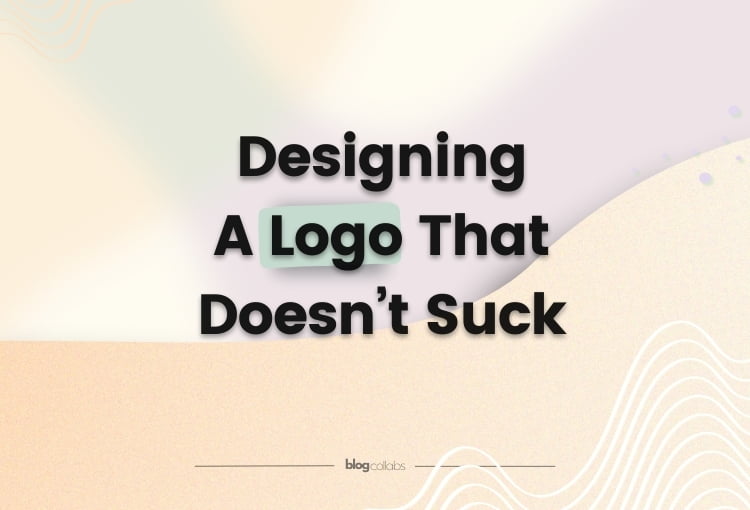How To Make A Media Kit
Establishing partnerships with different brands is the quickest and best way of growing your blog. You can secure brand deals, sponsorships and piggy-back off a brand’s existing audience to expand your own. It’s a mutually beneficial deal; the brands also gain exposure and partnering with you can help them generate more leads or sales!
Loads of brands are always looking for new partners, but how do you ensure they pick you and your blog?
Despite what the industry leads you to believe, the blogging industry is far from dead. Yes, we have ‘blogging’s younger sibling’ in the form of influencer marketing where standing out from the competition applies even more so.
You may have the internal monologue of “I need to tempt brands to contact me first” – and it all starts with a media kit.
What is a Media Kit?
In simple terms, a media kit is your way of bragging about yourself and your capabilities to brands. It tells them all they need to know about your blog, showcasing your personal brand, who reads your content, etc.
It makes life sooo much easier to have a media kit to hand in the event a brand does reach out. Also, it’s a mark of professionalism, and companies will compare media kits across the board to decide which bloggers present the best possible return on investment.
We’ve listed everything your kit needs in this guide – plus a few free tools that’ll help you out. Read on or jump to whatever section screams out at you the most.
About You
The first section is an obvious one; tell these lovely brands about you and your blog! You don’t want to make this too big, but equally, it can’t be too small and sparse. You’re looking for the Goldilocks rule here – it has to be just right! There are some great examples of media kit introductions to look through if you need inspiration on how to go about things.
Generally, we think it’s smart to include these things in your “About You” section:
- A quick introduction to who you are
- An explanation of your blog and what you write about
- Any accolades or impressive qualifications that may add value to your blogging capabilities
- How long you’ve been blogging for
- The core vision/mission of your blog
The main goal is to ensure brands keep reading the rest of your media kit. You need to showcase your initial expertise while the inclusion of a mission/vision helps brands see if your blog aligns with theirs. Your success rate will grow exponentially when companies relate to your vision as they see you as the perfect partner for an upcoming campaign.
Key Blog Stats
Brands are all about data and metrics. As incredibly talented as you are at creating wonderful blog content, they ain’t interested if the stats don’t back it up. No brand will want to do business with a blog that gets 10 page views a week – that’s the harsh reality of the industry we work in!
Okay, fine, stats aren’t everything (your demographic matters a lot too, but shhh, more on that in a moment) but they can help you secure more brand deals and sponsorships by showcasing your blog’s potential. A brand executive’s eyes will light up when they see impressive blog metrics in a media kit – to them, it’s a way of seeing how you can give them a great ROI.
So, this gives you two things to consider when making a media kit – what blog stats should you display and how should you display them? Tackling the second question, these stats should be one of the most eye-catching elements of your media kit. They should jump out at the reader and make them go “Cor blimey, those are some impressive statistics we could use to our advantage!”. Make them bold and don’t mess around with additional context; present the figures, what they represent and nothing else.
When it comes to the metrics most brands are keen to know about, you should look to include the following:
- Monthly Unique Visitors (in other words, your web traffic for the month)
- Monthly Page Views
- Average Views Per Post
- Average Time Spent On Your Site
- Average Subscribers/Sign-Ups Per Month (good if you have a mailing list or some type of platform for people to subscribe to)
It goes without saying you should only include impressive metrics. If your unique monthly visitors are pretty poor, it’s not worth shouting about it! A good set of stats helps brands understand your blog’s reach and engagement. The sign-ups/subscribers stat is possibly the best here – when lots of people sign up to your mailing list each month, it shows the brand you’re good at conversions. This is like music to their ears and they’ll be very eager to get in touch.
Audience Demographics
As noted earlier, stats are only part of the allure for brands. A blog can have outrageously good stats, though it might not secure many brand deals because the wrong audience visits the site. Ideally, your audience demographic should fill a particular niche. Bloggers that cater to a very wide audience are less likely to get deals because it’s harder for brands to see any potential there. They’d rather invest in blogs with the same audience demographic as their brand.
With that in mind, you need to include some basic information on your target audience in this media kit. It doesn’t need to be extensive and should largely cover these key points:
- Age
- Gender
- Location
- Interests
You should be able to obtain all of this information from Google Analytics, so it’s easy to understand who reads your blog posts and visits your site. Establishing a core audience demographic makes it easier to align with other brands. Let’s say you run a fitness blog and most of your audience is between the ages of 18-30, male & female and loves working out. You’re immediately going to attract interest from different fitness brands, supplement brands, clothing brands and even meal prep brands.
Sponsorships and deals are hard to come by when a brand doesn’t know who reads your blog. It becomes a risky investment on their behalf, so always be sure you demonstrate who your audience is and what they’re interested in.
Your Social Reach
Companies understand a blogger’s influence should extend beyond their website. They know how powerful social media can be at influencing demographics, so it’s time to showcase your social reach.
This part of your media kit doesn’t need to be detailed and can simply go at the bottom of the page – or form part of the statistics/metrics section. All you have to do is show how many social media followers you have across the main platforms you use – Instagram, Twitter/X, TikTok, etc. Blogs that transfer their readership to different social media platforms are infinitely more appealing to brands than those that don’t.
Your social reach tells a brand two main things:
- You’ve got a strong audience across social media to cultivate and tap into
- You’re clearly good at marketing and driving people to your social media accounts
Both are excellent qualities they’re more than interested in! We’d even suggest slipping in a little stat about average social media growth per month. It’s a little something to show brands “Look, I’m generating loads of new followers on my socials each month and it’s all thanks to my blog. You could take full advantage of this guys!”
These stats will take up a small part of your media kit, yet they’re another aspect of it that keeps brands around for longer. Realistically, most brand executives won’t have the time to pour through every single blogger media kit they’re sent. They skim them and look for things that jump out from the page and encourage them to learn more. Good social reach does this, so it makes brands read the rest of your kit!
Content Capabilities
What can you do for any brands that might get in touch with your blog? This is what companies are asking as they read your media kit. How can you help them and are you able to provide the content they’re looking for?
You can make this a standalone section or implement it at the end of the “About You” section at the start. It depends on the layout of your media kit and how much space you have to play with. Again, there’s no need to be completely detailed here; remember, a media kit is a snapshot of you, as a blogger, and what your blog is capable of. The goal is to generate contacts from brands, which can then lead to deeper discussions of your capabilities. You don’t want to overload brands with hundreds of words of content in your media kit – it’s overkill, they’ll get bored and you’ll miss opportunities.
In this regard, all you need to do is give an overview of the types of content your blog produces:
- Standard blog posts
- Reviews
- News-style articles
- Listicles
At the same time, express the content you’re capable of making for brands if they want to work with you:
- Sponsored posts
- Affiliate posts
- Social media posts – both text and video formats
- Giveaways
- Reviews
It’s wise to cast the net as far as possible here; the more content you can produce, the higher your chances are of receiving brand deals. If you’re only going to do sponsored blog posts for brands, hardly anyone will be that keen to get in touch. The more you can do for them, the more they’ll do for you.
Also, from a money-making perspective, you can charge more for multiple types of content. Rather than only paying you to make a sponsored blog post, you can get the brand to pay you for multiple social media posts, a giveaway and more. Think of it as a way of maximising your earnings potential from every brand deal!
Previous Partnerships
Have you worked with any brands before? If not, skip this section and move on to the next one!
If you have, this becomes one of the most critical parts of an influencer media kit. Provide some brief details of any previous partnerships as a way of showcasing your potential – and blowing your own trumpet just a little bit. This becomes a form of social proof, encouraging brands to trust you. It’s reported that 86% of businesses consider verified reviews critical in their purchase decisions, and this extends to their decision-making when working with bloggers and influencers.
Having evidence of previous partnerships – possibly even with a quick one-line review from the brand itself – works wonders for your media kit. It proves to prospective brands that you’re a great collaborator and work well in these partnerships. Even if you don’t have a quick one-line review, the mere presence of a brand’s name or logo speaks volumes. At the very base level, it tells a brand you’re experienced in working with other companies. This lowers the risk from their side as they’ll think “This person has worked with many brands before, they must know what they’re doing and we should be able to trust their content.”
As your blog continues to secure partnerships, you can flesh out your media kit by adding them to this section!
Contact Information
Believe it or not, this section could undo all of your hard work. It’s the simplest section in your media kit, yet that makes it the easiest to forget! There will be times when you send your kit directly to a brand – maybe they’ve contacted you via your socials or through your blog and want to see your media kit before committing to a partnership. In cases like this, forgetting your contact details isn’t a huge deal as the brand already knows how to connect.
However, most of the time your kit will be sent to multiple brands at once. You can do this yourself or partner with a company to handle it for you. Either way, brands need to know how to get in touch with you if they like your media kit! Perhaps you wowed them – but they have no way of reaching out because you’ve not included some simple contact information in the kit.
This should come at the bottom of your media kit – or possibly right at the top – and you must display at least one form of contact. It can be your email, social handles, phone number or anything else. Give brands clear ways of reaching out and ensure your contact details don’t get lost amongst the rest of your media kit.
How To Make A Media Kit – Picking The Right Format
You’ve seen everything you must include in a media kit, but how do you format this thing?! Most bloggers and influencers will go down one of two routes:
- A single-page media kit
- A multi-page media kit
Most of the time, it’s better to put everything on one page. You can create a simple template and it serves almost like an advertising poster for your brand. This is ideal when you’re sending media kits to lots of companies hoping for connections – it’s also perfect if the company gets lots of media kits as they can’t be bothered to read through a full-on dossier!
As such, you’re in the difficult position of including everything noted above on one A4-sized piece of paper. That’s why it’s important to be concise and to work on the layout so everything is in neat sections that are easy to read.
Best Free Tools To Make A Media Kit
The secret to a great media kit is making it stand out amongst a swarm of other media kits. In this respect, you can’t afford to send something that looks like a basic CV. It needs to be eye-catching and impressive while also reflecting your blog’s brand image. Some bloggers employ graphic designers to make a fancy media kit template for them – but we’ve picked out a few free tools to help you get started:
- Adobe Express Media Kit Templates – This gives you thousands of media kit templates and you can refine your search to find ones more suited to your niche.
- Canva Media Kit Templates – Again, you’ll find loads of free media kit templates to scroll through and borrow. These are excellent as most of them are the perfect style for bloggers and influencers.
- Hubspot Media Kit Template – This free PDF template is a good example of a multi-page media kit. While we said they’re not the “best” option for bloggers, they can be useful if a brand contacts you directly. Multi-page kits give you a chance to go into more detail, which can help you if you’re on a shortlist of bloggers and need to demonstrate your edge.
Creating a media kit is the first step in growing your blog and finally making a good amount of money from it. The next stage is finding as many potential partnerships as possible.
Join Blog Collabs today and we’ll send you plenty of brand opportunities straight to your inbox. All you have to do is contact the brands, send over your media kit and hope they like what they see. It’s completely free to do – so click here to sign up today.
